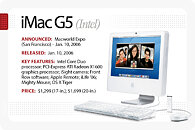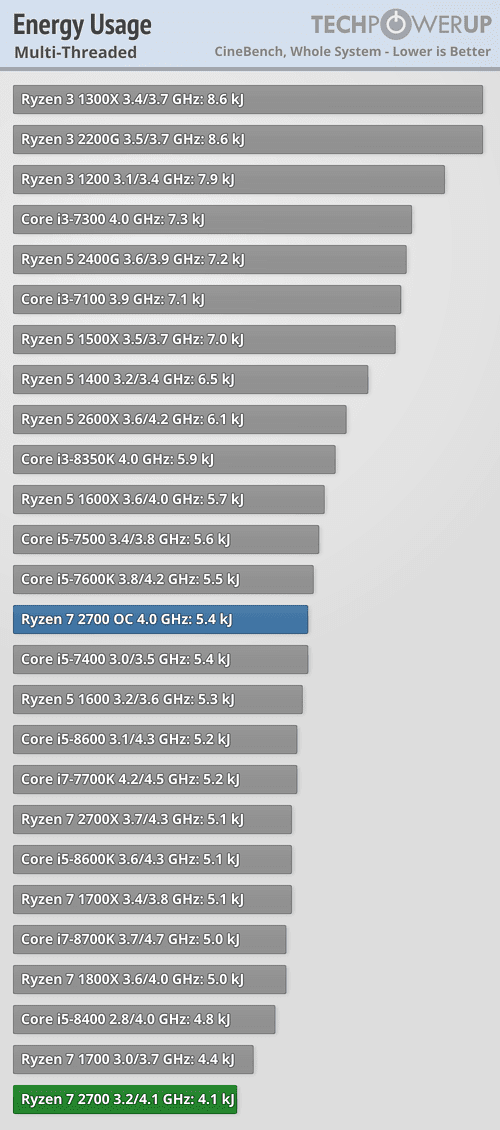- Joined
- Oct 9, 2007
- Messages
- 47,448 (7.50/day)
- Location
- Hyderabad, India
| System Name | RBMK-1000 |
|---|---|
| Processor | AMD Ryzen 7 5700G |
| Motherboard | ASUS ROG Strix B450-E Gaming |
| Cooling | DeepCool Gammax L240 V2 |
| Memory | 2x 8GB G.Skill Sniper X |
| Video Card(s) | Palit GeForce RTX 2080 SUPER GameRock |
| Storage | Western Digital Black NVMe 512GB |
| Display(s) | BenQ 1440p 60 Hz 27-inch |
| Case | Corsair Carbide 100R |
| Audio Device(s) | ASUS SupremeFX S1220A |
| Power Supply | Cooler Master MWE Gold 650W |
| Mouse | ASUS ROG Strix Impact |
| Keyboard | Gamdias Hermes E2 |
| Software | Windows 11 Pro |
Apple's decision to switch from Intel processors for its Mac computers to its own, based on the Arm architecture, has shaken up the tech world, even though rumors of the transition have been doing rounds for months. Intel's first official response, coupled with facts such as Intel's CPU technology execution being thrown completely off gear due to foundry problems; pointed toward the likelihood of Intel not being able to keep up with Apple's growing performance/Watt demands. It turns out now, that Intel's reasons are a lot more basic, and date back to 2016.
According to a sensational PC Gamer report citing former Intel principal engineer François Piednoël, Apple's dissatisfaction with Intel dates back to some of its first 14 nm chips, based on the "Skylake" microarchitecture. "The quality assurance of Skylake was more than a problem," says Piednoël. It was abnormally bad. We were getting way too much citing for little things inside Skylake. Basically our buddies at Apple became the number one filer of problems in the architecture. And that went really, really bad. When your customer starts finding almost as much bugs as you found yourself, you're not leading into the right place," he adds.

It was around that time that decisions were taken at the highest levels in Apple to execute a machine architecture switch away from Intel and x86, the second of its kind following Apple's mid-2000s switch from PowerPC to Intel x86. For me this is the inflection point," says Piednoël. "This is where the Apple guys who were always contemplating to switch, they went and looked at it and said: 'Well, we've probably got to do it.' Basically the bad quality assurance of Skylake is responsible for them to actually go away from the platform." Apple's decision to dump Intel may have only been more precipitated with 2019 marking a string of cybersecurity flaws affecting Intel microarchitectures. The PC Gamer report cautions that Piednoël's comments should be taken with a pinch of salt, as he has been among the more outspoken engineers at Intel.
Image Courtesy: ComputerWorld
View at TechPowerUp Main Site
According to a sensational PC Gamer report citing former Intel principal engineer François Piednoël, Apple's dissatisfaction with Intel dates back to some of its first 14 nm chips, based on the "Skylake" microarchitecture. "The quality assurance of Skylake was more than a problem," says Piednoël. It was abnormally bad. We were getting way too much citing for little things inside Skylake. Basically our buddies at Apple became the number one filer of problems in the architecture. And that went really, really bad. When your customer starts finding almost as much bugs as you found yourself, you're not leading into the right place," he adds.

It was around that time that decisions were taken at the highest levels in Apple to execute a machine architecture switch away from Intel and x86, the second of its kind following Apple's mid-2000s switch from PowerPC to Intel x86. For me this is the inflection point," says Piednoël. "This is where the Apple guys who were always contemplating to switch, they went and looked at it and said: 'Well, we've probably got to do it.' Basically the bad quality assurance of Skylake is responsible for them to actually go away from the platform." Apple's decision to dump Intel may have only been more precipitated with 2019 marking a string of cybersecurity flaws affecting Intel microarchitectures. The PC Gamer report cautions that Piednoël's comments should be taken with a pinch of salt, as he has been among the more outspoken engineers at Intel.
Image Courtesy: ComputerWorld
View at TechPowerUp Main Site









